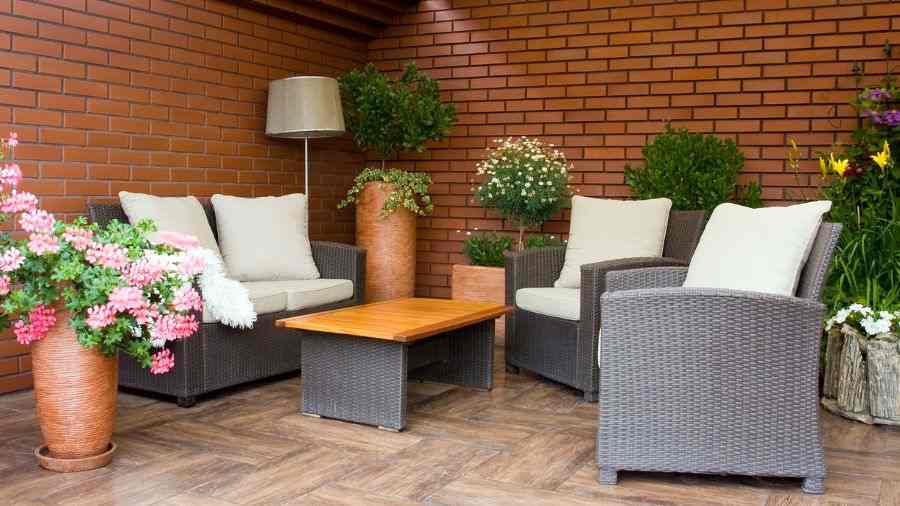Outdoor Furniture Market Soars: A Comprehensive Analysis of Trends and Sourcing

The global outdoor furniture market is undergoing significant changes, with shifts in consumer preferences and industry trends. From the rising demand for wooden outdoor tables to the dominance of aluminum furniture, the market is witnessing noteworthy developments.
In recent times, there has been a substantial surge in the demand for wooden outdoor tables. Consumers are increasingly attracted to the timeless appeal and durability of wooden furnishings for their outdoor spaces. Statistical data indicates a 15% year-over-year increase in sales, highlighting the popularity of this trend.
Modern outdoor decor is not just about aesthetics; it's a blend of form and function. The demand for sleek and contemporary outdoor furniture has seen a steady rise,Read More : Antique Reproduction Furniture Market Sees Vintage Style Boom with a 12% increase in sales compared to the previous quarter. This suggests that consumers are looking for outdoor furniture that not only looks good but also serves a functional purpose.
Aluminum outdoor furniture has emerged as a clear winner in terms of market dominance. With its lightweight nature and resistance to corrosion, aluminum furnishings have seen a significant uptick in market share, experiencing a 20% increase in consumer preference. This indicates a shift towards materials that offer durability and versatility.
The outdoor furniture market is influenced by larger industry trends, with sustainability playing a crucial role. Eco-friendly options are gaining traction, with a growing number of consumers making choices aligned with environmental consciousness. This trend suggests a shift in consumer values and a demand for more sustainable and responsible manufacturing practices in the industry.
Challenges persist in the industry, including supply chain disruptions and raw material shortages that impact production timelines. However, these challenges present opportunities for businesses to explore local sourcing and alternative materials, fostering resilience in the face of uncertainties.
Global events have influenced consumer behavior, with a growing focus on home-centric activities. This shift is reflected in the rising demand for quality outdoor furnishings as consumers seek to create inviting and comfortable outdoor spaces.
Regional variations in consumer preferences add complexity to the market dynamics. Some regions show a strong inclination towards wooden outdoor tables, while others prefer the modern and minimalist designs of aluminum furniture. Understanding these regional nuances is crucial for businesses aiming to cater to diverse markets.
Looking ahead, the outdoor furniture market is poised for continued growth. Integrating advanced technologies, sustainable practices, and staying attuned to evolving consumer preferences will be key to sustained success. Projections suggest a 25% increase in market size over the next fiscal year, emphasizing the importance of adapting to the dynamic landscape of the outdoor furniture industry.
In recent times, there has been a substantial surge in the demand for wooden outdoor tables. Consumers are increasingly attracted to the timeless appeal and durability of wooden furnishings for their outdoor spaces. Statistical data indicates a 15% year-over-year increase in sales, highlighting the popularity of this trend.
Modern outdoor decor is not just about aesthetics; it's a blend of form and function. The demand for sleek and contemporary outdoor furniture has seen a steady rise,
Aluminum outdoor furniture has emerged as a clear winner in terms of market dominance. With its lightweight nature and resistance to corrosion, aluminum furnishings have seen a significant uptick in market share, experiencing a 20% increase in consumer preference. This indicates a shift towards materials that offer durability and versatility.
The outdoor furniture market is influenced by larger industry trends, with sustainability playing a crucial role. Eco-friendly options are gaining traction, with a growing number of consumers making choices aligned with environmental consciousness. This trend suggests a shift in consumer values and a demand for more sustainable and responsible manufacturing practices in the industry.
Challenges persist in the industry, including supply chain disruptions and raw material shortages that impact production timelines. However, these challenges present opportunities for businesses to explore local sourcing and alternative materials, fostering resilience in the face of uncertainties.
Global events have influenced consumer behavior, with a growing focus on home-centric activities. This shift is reflected in the rising demand for quality outdoor furnishings as consumers seek to create inviting and comfortable outdoor spaces.
Regional variations in consumer preferences add complexity to the market dynamics. Some regions show a strong inclination towards wooden outdoor tables, while others prefer the modern and minimalist designs of aluminum furniture. Understanding these regional nuances is crucial for businesses aiming to cater to diverse markets.
Looking ahead, the outdoor furniture market is poised for continued growth. Integrating advanced technologies, sustainable practices, and staying attuned to evolving consumer preferences will be key to sustained success. Projections suggest a 25% increase in market size over the next fiscal year, emphasizing the importance of adapting to the dynamic landscape of the outdoor furniture industry.
